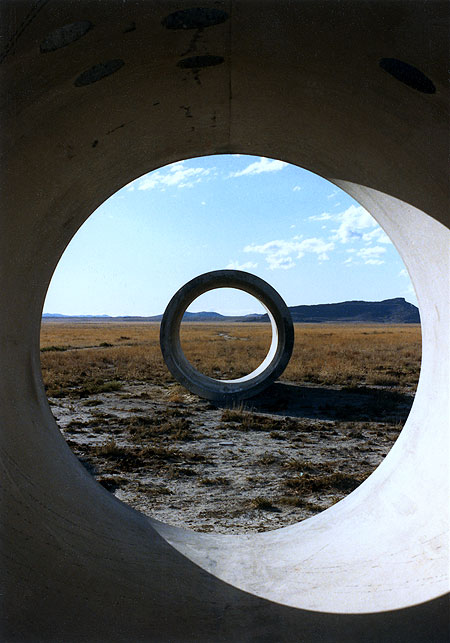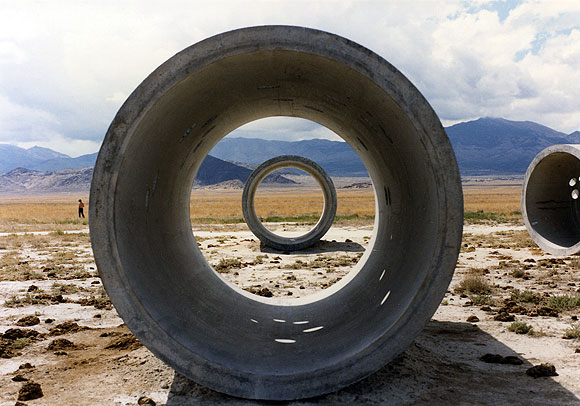View current page
...more recent posts
From WorldChanging:
The media is buzzing over the spinach crisis, caused by an outbreak of the potentially lethal bacterium E. coli O157:H7. A curious yet widespread claim is that, because some of the spinach so far identified as contaminated came from organic farms, organic farming is unsafe. It's a curious claim, because scientists understand pretty well where the O157:H7 is coming from: the bellies of factory-farmed cows. Their manure, as it turns out, is now crawling with the critters. As this New York Times op-ed puts it:The same newspaper that published that editorial has a story today titled "As Children Suffer, Parents Agonize Over Spinach," the purpose of which seems to be scare the living daylights out of anyone with a small child.Where does this particularly virulent strain come from? It's not found in the intestinal tracts of cattle raised on their natural diet of grass, hay and other fibrous forage. No, O157 thrives in a new--that is, recent in the history of animal diets--biological niche: the unnaturally acidic stomachs of beef and dairy cattle fed on grain, the typical ration on most industrial farms. It's the infected manure from these grain-fed cattle that contaminates the groundwater and spreads the bacteria to produce, like spinach, growing on neighboring farms.
In many cases, it crept up with frightening force after what had seemed a harmless, even healthful meal--a spinach salad with walnuts, a sandwich layered with spinach or, as for the Krause family, a baked, boneless, skinless piece of chicken on a small bed of spinach. Then what had seemed a simple bout of diarrhea in the morning often led to a harrowing, bloody race to the emergency room by midnight.This melodramatic article by Monica Davey serves up abundant, clinical, sickening detail about the effects of E Coli, without mentioning anything about causes. ("'In the course of one week, he went from this healthy, lively little boy to a boy in a hospital bed fighting for his life...he turned yellow and gray, literally. It was shocking and terrifying and unbelievable to watch.'") Aside from ghoulish exploitation and a good rubberneck at others' misery, Davey appears, with this contextless story, to want parents to switch their children's diets to Keebler cookies, frozen pizza, and other "safe" foods.
And around the country, some families still wait by bedsides, wondering which foods they could ever again feel safe giving their children, what the government or the spinach industry could have done to protect them, and, most of all, whether their loved ones will ever fully recover.
"Here you think you’re feeding your child a great, healthy meal," Dennis Krause said sadly. "But here I was, poisoning him."

Tyler Green of Modern Art Notes recently reported on his trip to Sun Tunnels, Nancy Holt's earthwork in northern Utah. Sounds like he had a so-so time. Green thinks the work hasn't aged well, and I can't comment on that but am posting these snapshots from a trip my brother and I took there in the '80s, to show the magic Holt's piece is (or was) capable of. I'd be surprised if you couldn't get similar views now, but here's what Green says: "They never came to life, they never became exciting. They seemed too self-consciously monumental, too interested in being pagan totems to artisanal existence. Sun Tunnels is too much a post-industrial Stonehenge-like gesture to succeed as an engaging artwork. While the greatest pieces of land art exist within nature and bring their environment into the artwork--think how the Jetty and the Great Salt Lake co-exist or how Lightning Field is placed within its space--Sun Tunnels rejects its own landscape. Each tunnel looks like it had started to erode (Sun Tunnels was built in 1976) and was later patched so as to maintain its shape. While the Jetty basks in its location, Sun Tunnels seems to fight its off. The Tunnels' roundness is just too jarring, too inappropriate for this landscape. Sun Tunnels is funky cool in an I-was-there kind of way. But that's as far as they get."


Turning to my pics from the '80s, that's me in the middle photo, wearing my high desert button-down shirt, with my brother holding the camera. That's him off in the distance in the third shot. The bottom pic also shows some unfortunate cow pies around the piece at that time. I wrote Holt a letter after our visit and she wasn't too happy to hear about the cattle, but said that unless she fenced the area there was no guarantee the livestock would stay out. In the middle photo, you can see ricochet marks of bullets fired off by local art lovers inside the tubes. ("It blowed up good." "It blowed up real good.") Small wonder Holt has to keep them patched.
Some earthworks, notably Michael Heizer's, are jarring interventions in the landscape, and I'm really not sure what Green means when he says Sun Tunnels fails to "bring the environment within the artwork." Holt positioned the tunnels on the desert flatness so that one sees a different, exquisite mountain vista from each of the four possible vantage points. These distant geologic bulges are framed within the near-mystical concentric circles that appear when you view the tunnels head on--the top photo conveys some of the Magrittean effect. The choice of where to place them wasn't arbitrarily aesthetic, though: the cylinders are aligned with the positions where the sun rises and sets at the solstices (hence the piece's name). She cut smaller rounded holes in the tunnel walls, corresponding to the shapes of stellar constellations, which cast circles of sunlight or moonlight within the darkened tubes. Much like the work of Holt's husband Robert Smithson (this was her first piece after his death, I believe) Sun Tunnels combines analytical modernism--a costly desert construction project the purpose of which is to optically slice and contain the landscape--and pre-scientific, ritual channeling of light from heavenly bodies. Green's phrase "post-industrial Stonehenge" captures the essence but not the excitement. We spent about fourteen hours at the tunnel site, and watched the landscape (and skyscapes) change from afternoon to dusk to darkest night, leaving about 3 am to catch an early morning flight from Salt Lake City. The experience was rich and unforgettable.

An earlier post here rashly declared the Dennis Muren/Jack Woods trash horror classic Equinox, 1970, the "best film ever made." The new Criterion Collection double-disc reissue only makes that assessment more sound. If I ever taught a film course I'd skip Alexander Nevsky and the films of Ernst Lubitsch and start with this. The DVD includes the 1967 original, made by a group of teenagers on a $6500 budget over several years, plus the Jack Harris/Jack Woods theatrical (drive-in) version, which recut the kids' movie and added scenes with the same (but noticeably older) actors. It'd be a great way to show students what can be done with no money and then to demonstrate, shot by shot, how a more experienced filmmaker tightens it up, splices in new dialogue, and even adds a character not in the original. Why is it superb? It has jaw-dropping bad, Plan 9 moments, Night of the Living Dead creepy moments, unexpectedly striking, Ray Harryhausen-style special effects (Muren went on to do Star Wars, Dragonslayer, The Hulk, and many other films not as good as this one), but mostly because it never stops surprising you. The motivation of the characters is baffling throughout, but the plot never loses forward momentum. On the commentary track you hear one of the now-grown-up makers of the original ask, about one of the protagonists in his own movie, "Why did he do that?" and another replies "I don't know--it's one of the mysteries that is Equinox."
As the essay accompanying the DVD notes, the "kids who go in the woods, find a weird book, unleash demons from Hell" plot prefigured Evil Dead by 10 years. Equinox marks the beginning of the modern, Chainsaw type horror film simply because the makers lacked the budget to establish Gothic, haunted house suspense with lavish sets and camera work. Yet the evil is all the more disconcerting for occurring in the absolutely banal context of teenagers having a picnic in the country with a bucket of Kentucky Fried. Much of the dread (and humor) springs from, as someone once described Dario Argento's films, "people behaving strangely for no reason." The characters may have been babes in the woods but the filmmakers weren't: although young, they were movie geeks and in the commentary talk about how they obsessively analyzed films such as Don Siegel's Invasion of the Body Snatchers. Their love of film can be felt in the finished product, which has many edgy and precocious shots.
(Science fiction/fantasy fans should watch for cameos by novelist Fritz Leiber as the elusive "Dr. Waterman.")
Trailer on YouTube.
